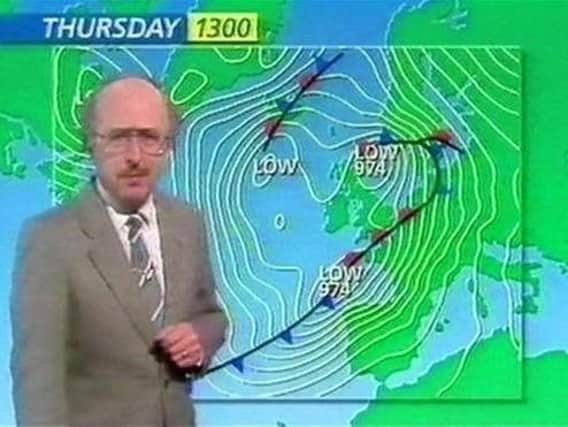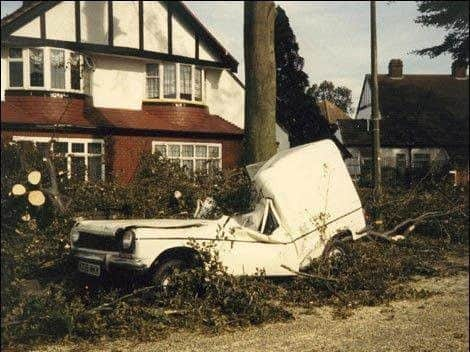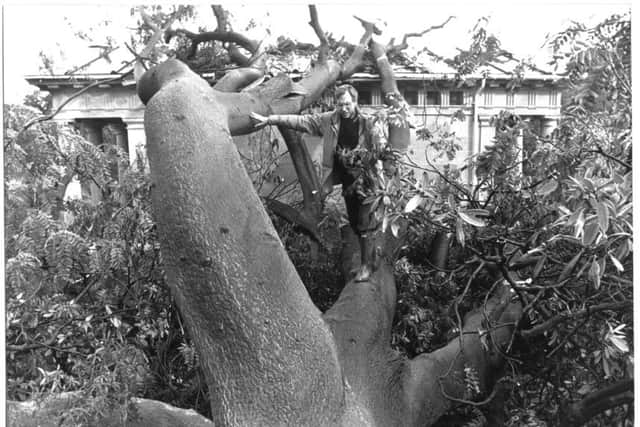Ill wind over the gale they didn't see coming


The Force 11 winds that swept up the Humber estuary at 5.30am and then across the southern half of Britain caught almost everyone by surprise.
Thousands awoke to find their power cut off, and by the time the country took stock, 18 people were dead and around £1bn of damage had been wrought.
Advertisement
Hide AdAdvertisement
Hide AdIt had been Britain’s most destructive storm since 1703, yet only a few hours earlier, Mr Fish had told BBC1 viewers: “Earlier on today apparently a lady rang the BBC and said she heard that there was a hurricane on the way.


“Well, don’t worry if you’re watching, there isn’t.”
Last night, his former employers at the Met Office were still insisting that their forecaster was not entirely wrong.
“This storm wasn’t officially a hurricane as it did not originate in the tropics,” it posted on a page of its website devoted to the event - though it added: “But it was certainly exceptional.”
Mr Fish, interviewed for a TV programme about the anniversary of the storm, maintained he had been referring to a different hurricane. It was one of “a number of myths” surrounding the incident, he said.
Advertisement
Hide AdAdvertisement
Hide Ad

The 73 year-old former presenter admitted that the story about the woman phone caller was untrue. “It was one of those things that slipped out at the time but unfortunately there was no truth in it,” he said.
“At the time it was pretty horrendous and the press were relentless but as time went on it turned from a disaster to something that was quite something to be proud of.”
The Met Office said Mr Fish “was unlucky, as he was talking about a different storm system over the western part of the North Atlantic Ocean that day. This storm, he said, would not reach the British Isles - and it didn’t.”
However, there is no dispute over the fact that the country went to bed not knowing that a devastating storm was on its way.
Advertisement
Hide AdAdvertisement
Hide Ad

“I don’t think we would miss a storm like this if it happened again,” Mr Fish said.
Weather warning systems had improved drastically since the 1980s, he added.
“There was a warning system at the time but it was next to useless and there’s now a very efficient and very good and very clear system of warnings.”
The storm brought down around 15m trees, with Kent, Sussex, Norfolk, the Isle of Wight and Essex among the worst hit areas.
Advertisement
Hide AdAdvertisement
Hide Ad

Three decades later, young saplings can be seen among the fallen trunks but the scars from the cyclone would be felt for generations to come, spokeswoman Hollie Anderson said.
Ashenbank Wood, a 79-acre forest in Kent, was “devastated” by the storm, which “changed the shape of the landscape”, she said.
She added: “When I visited Ashenbank I was astonished by how many fallen trees were still on the ground.
“Even my grandchildren would still probably be able to see the impact of that storm.”
Advertisement
Hide AdAdvertisement
Hide AdAt sea, many small boats were wrecked and the Sealink cross-channel ferry MV Hengist was driven ashore at Folkestone.
Billboards and construction site scaffolding towers were blown over in many places, and the aerial footage broadcast on TV the following evening showed some buildings stripped of their roofs.
In London, power was so erratic that both the BBC and ITV were forced to transmit their breakfast bulletins from emergency facilities. On BBC1, presenter Nicholas Witchell had to broadcast from a children’s studio.
Michael Fish’s original forecast gained such notoriety that it featured in the opening ceremony of the London 2012 Olympic Games.